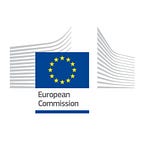Sahel’s nutrition catastrophe
An estimated one million children under 5 years of age die in the Sahel each year, one of the biggest causes is malnutrition. The EU is leading the fight against this silent killer.
In a room full of babies, silence reigns. A faint wailing, of discomfort perhaps, can be heard from somewhere in the ward. However, for the most part, there is silence. Such is the atmosphere in Zinder hospital’s intensive nutritional recuperation unit in Niger. Healthy babies cry, but severely undernourished babies, whose bodies have lost essential nutrients and whose immune systems are close to collapse, no longer have the energy to do so. Their lives are at risk, and without immediate treatment, chances of survival are low.
Malnutrition is rife throughout the Sahel, the strip of land stretching across the African continent at the southern edge of the Sahara Desert. An estimated one million children under 5 years of age die in the Sahel each year, and more than 460,000 of these deaths are linked to malnutrition.
“With a mandate to save lives, EU Humanitarian Aid is engaged in the response to the Sahel’s nutrition crisis, especially since the 2005 Niger food crisis that shocked the world. European aid funding has been capital in the last fifteen years to expand and increase the response to malnutrition and save thousands of lives,” says Patricia Hoorelbeke, EU humanitarian expert on nutrition for West Africa.
Among the major changes that have made large-scale treatment possible, one stands out. For decades, all children who were severely malnourished had to be hospitalised for treatment, which mainly consisted of therapeutic milks that require clean water for the mix and must be administered by medical professionals. Medical care was resource-intensive and expensive, and hospitalisation could last weeks.
All this changed when Ready-to-Use Therapeutic Food (RUTF) was introduced in 2005. It is a nutrient and energy rich peanut-based paste that helps children recover from nutritional deficiencies. It does not require any mixing with clean water and comes in small sachets that can be safely administered by parents at home, with a weekly medical check at the community health centre. Since its introduction, only children who have medical complications on top of malnutrition, such as malaria or respiratory diseases, have to be treated at the hospital. “Suddenly we were not restrained by the number of beds in a hospital. We could treat most of the children in their village. This sparked a real revolution,” explains Noel Zagre, UNICEF’s regional nutrition advisor in West Africa.
The figures of this “revolution” speak for themselves. Over ten years, between 2008 and 2018, the number of severely undernourished children who received adequate treatment across the Sahel countries has increased eleven-fold, reaching over 1.6 million children in 2018. At the same time, the number of health facilities providing treatment has gone up from 1,000 in 2009 to more than 7,000 today.
Throughout the years, the European Union has funded on average more than 60 per cent of the quantity of Ready-To-Use Therapeutic Food required in the Sahel. Figures vary by country, but in Niger, EU humanitarian support has covered between 60 and 85 per cent of the needs. “The impact is huge. Perhaps it is a fact little known by the average European citizen, but EU taxpayers have contributed to saving countless lives in the Sahel,” says David Kerespars, Head of the EU humanitarian office in Niger.
“EU funding goes to support different international organisations that work to support existing health structures. Funds go to medical equipment, payment of staff, but also training and capacity building. But more efforts should go to the prevention of malnutrition, as it would be extremely difficult to be able to treat all cases,” he explains.
Despite the remarkable progress made, the number of children who currently receive treatment represent between 40 and 50 per cent of the total number of children in need of nutritional assistance in the Sahel. The number of malnourished children keeps increasing, partly due to population growth, but also because of insufficient investments in making nutrition a central part of the health system and access to basic services.
Prevention is, thus, crucial. At the transition phase ward of Mirriah hospital, where children who have recovered are about to be discharged and return home, health educator Sani Rabi holds before a group of mothers a coloured band that serves to detect if a child is undernourished. “If you put the band around the mid-upper arm and it shows green, your baby is okay; if it is yellow, you need to see a doctor as soon as possible; if it is red, it is an emergency and you need to rush for help,” she says aloud.
“I have trained many mothers,” she proudly admits.
Teaching mothers to measure their own babies with this band, as if they are using a thermometer to test for fever, is one of the recent strategies carried out to diagnose kids earlier and therefore improve their chances of survival. The approach was tested in this very region of Niger by medical non-governmental organisation ALIMA in an EU-funded project, and its positive results led to it being rolled out in most of West Africa. ALIMA has trained over one million mothers just in the last year.
However, more remains to be done and not just by humanitarians. “Many factors have a bearing on malnutrition, not only insufficient food intake, but also disease, access to safe water, sanitation and healthcare, or population growth. It is mostly linked to poverty and lack of resilience, and it escalates dramatically in the context of natural or man-made disasters. Unless those structural causes are addressed, the number of severely malnourished children will not stop increasing,” concludes Hoorelbeke.
By Isabel Coello, Regional Information Officer for North, West and Central Africa, European Civil Protection and Humanitarian Aid Operations (ECHO)
